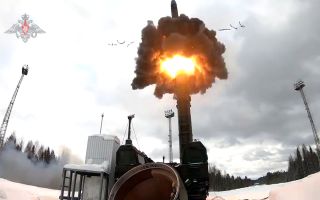'Race' to stratosphere heats up as British-built drone hits milestone
Engineers have successfully completed a stratospheric flight trial of a British high-altitude drone.
While still in development, the unmanned, solar-electric PHASA-35 system climbed 66,000ft over New Mexico in one day – landing successfully to increase competition in low-earth orbit.
The beginning of 2023 saw the discovery and demise of an alleged Chinese spy balloon hovering high above North America in the second layer of Earth's atmosphere, with widespread claims it had been sent to collect information from military sites.
Not without competition from other defence giants, BAE Systems’ subsidiary Prismatic Ltd has been developing PHASA-35 since 2018 to operate at the same heights, with a host of potential military applications for the long-endurance drone.
It has the potential to be used in the delivery of communications networks including 4G and 5G and could be used in a wide range of applications, such as disaster relief and border protection, as an alternative to traditional airborne and satellite systems.
Programme lead Dave Corfield, CEO of Prismatic, says current interest from UK and US defence "has always been high", even "prior" to the balloon incident earlier this year.
"Layered ISR" (intelligence, surveillance, reconnaissance) is high on the demand list for military defence, he said.
This means "meshing together" the picture provided by current assets flying at different altitudes, with those taken by a stratospheric drone operating high above harsh weather and conventional planes, but far below satellites.
PHASA-35 can cover 1,000 miles a day but, like high-altitude balloons, stamina is key.
Current plans are to achieve a flight lasting a year without landing.
Two engines are aided by energy management features, storing energy obtained during the day for night-time flight.
Despite sharing the same 35m wingspan as a Boeing 737, it shares the same 150kg weight as a piano. That includes a 15kg payload.
Hoped to launch around 2028, this milestone is the first in a series of trials.
Mr Corfield's "vision" is to see a small number of launch and recovery sites located around the globe at the best meteorological locations – to aid tricky take-off and landing, whereby an operator must "thread the needle of the stratosphere".









